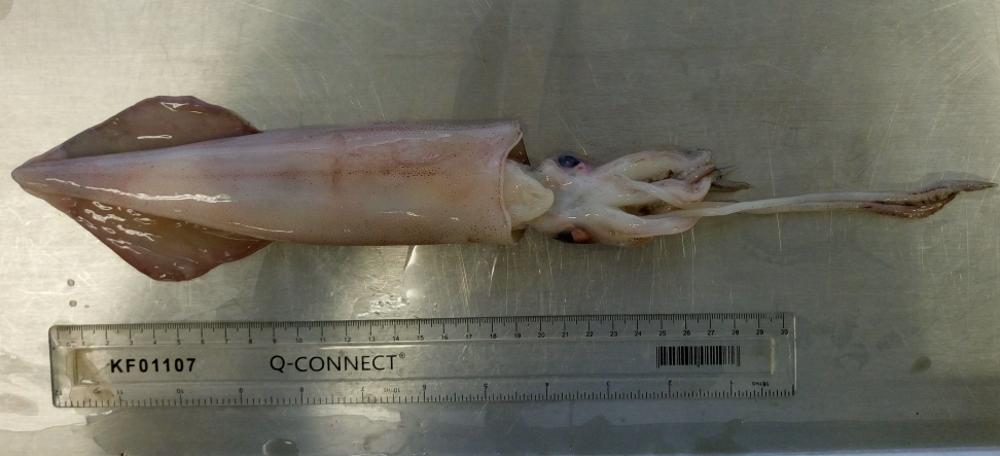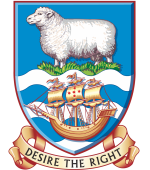Falkland Calamari (Loligo) - LOL
Common Names
Loligo, Patagonian squid (UK), Calamar (SP), Yariika (JA)
Scientific Name
Doryteuthis gahi
Description
Mantle cylindrical and moderately elongate. Fins rhomboidal and short (length and width 45 to 50% of mantle length); fin angle 30 to 43°. Arms elongate, especially III and IV. In mature males, left arm IV has suckers modified into suckerless knobs along more than 30% of its length (modification for transferring spermatophores to the female). No hooks on arms, suckers in two rows, sucker rings with 5 to 9 square teeth. Tentacles shorter than mantle length; club short (21% of mantle length); suckers in 4 rows, with the 2 middle rows enlarged. Colour dark purplish brown, with dark spots which phosphoresce when fresh.
Size Range
From 4 to 30 cm, but generally 8-18 cm in commercial catches.
Depth Range
150 -250 m.
Distribution
Mainly found to the southeast and east of the Islands, particularly around Beauchêne Island. Squid migrate into deeper water as they grow, eventually returning to shallow water when they are fully mature. Mature squid spawn in shallow water, with peak spawning in June/July and November/December. Also found on the shelf areas off the Argentinean and Chilean coasts.
Fishery Status
Fishery occurs in two seasons. The first season is February to May and the second season is August to October. Due to the migratory nature of the squid and the depths fished, the fishery catches Loligo within a limited size range, usually 8 - 15 cm. Larger squid that are caught are usually mature squid migrating back to the inshore spawning grounds. From 1987 until now, the Loligo fishery was the second most important in the FICZ both in terms of revenue and total catch. Fished for by bottom and pelagic trawlers.

